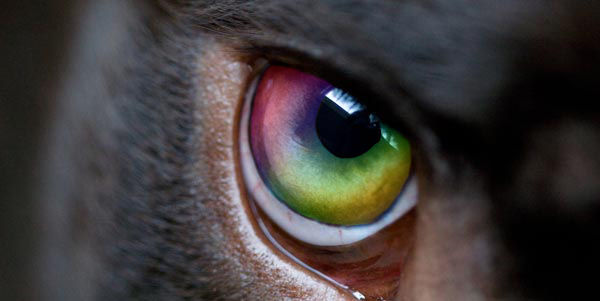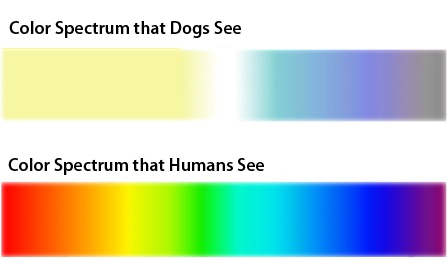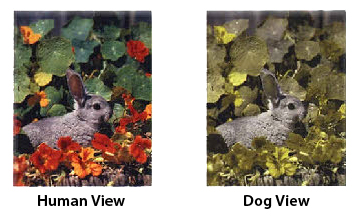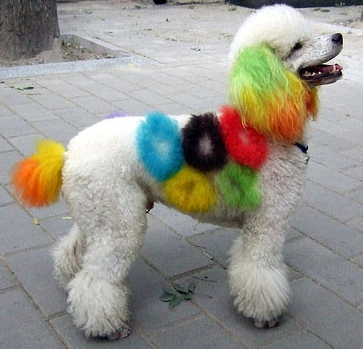
At one time or another we have all probably heard someone state that dogs cannot see in color. The actual facts behind this theory do not lead to a simple or “black and white” answer. It is a much argued topic that has been extensively researched in the past and when it comes down to it the answer to the question “Are dogs color blind?” is a little more complicated.
Actually, dogs can and do see in color. However, it is not the same way that you or I use our vision. The eyes of the canine species are considered to be dichromatic, which basically means that the can see two colors. Dogs can pick up colors within the blue and yellow spectrum. To compare, the human eye is classified as trichromatic and can see blue, yellow, and red.

So technically, by missing out on the red side of things dogs could be considered color blind and, in reality, they do not see the world like an old black and white TV show or movie. To understand this concept it is important to take a look at the anatomy that contributes to it. The typical “eye” consists of rods and cones. Rods are responsible for seeing color and cones enable the eye to perceive black and white.
We humans have eyes that contain approximately 7 times more cone material than our canine counterparts. The number of cone cells contributes directly to the way we see color. Because dogs have a lower cone count in their eyes they see colors as much more washed out and faded than we do. To make up for this shortcoming, dogs do have more rod cells in their eyes then humans. This enables them to see better in low light conditions, which was essential in their wild and undomesticated days.
So what do dogs actually see then? And how does their view of the world differ from ours? Dogs see certain colors and shades of gray. Since they are primarily tuned into the blue and yellow spectrums of light they can be considered to be blind to the red-green spectrum. This is comparable to a human who is color blind. Dogs will see green and red differently which is more of a yellow-brown or gray. The figure above shows how the colors we see on an everyday basis would correspond to what a dog sees.
The question arises then that if a red chew toy is lying out in a field of fresh green grass, will it appear invisible to your dog? Not at all. To compensate for the color blindness dogs have developed a highly tuned sense of depth perception. This is a result of their eye position in regard to their head. They also have better movement tracking vision, which is optimal at long range. Nature has provided your dog with a unique set of traits that allow them to get along just fine and are finely tuned to a dog’s needs.

When dogs begin their lives as puppies, they are born with closed eyelids. It generally takes a couple of weeks of development before they start to open up and gaze upon the world with milky blue eyes. By around 8 weeks the eyes have matured and changed to a more permanent color and puppies will begin to see their first hints of color, although their vision is still coming into focus for a few weeks after that.
In contrast, as dogs age, their eyes sometimes begin to cloud over. This is mainly due to “nuclear degeneration” which occurs as the lens of the dog’s eye gets denser with age and begins to change the way the eye works. This may sound pretty scary but, in reality, the dog’s vision is normally not affected too much.
 | So, are dogs color blind? Yes they sure are. Do they just see the world in just shades of gray? No, that is just a myth. Dogs and humans definitely see things differently, both literally and figuratively. Your furry friend has the perfect vision setup for their needs and daily routines and being color blind by our standards is in no way a real disadvantage for them. |
Russ Barker enjoys writing blog articles that everyone can understand which answer some of the big mysterious questions concerning pets, for example "Are Dogs Color Blind?". He finds the answers and passes the knowledge on so that everyone can be better informed. Russ is the chief blogger for DogTagArt.com, a company that strives to keep all pets safe with their one-of-a-kind pet ID tags. These handmade personalized pet tags feature over 500 artist designs and give you the ability to design your own using photos or artwork. It's a creative way to promote pet safety and gets people excited about their ID tags.

